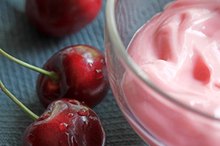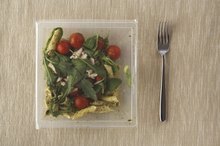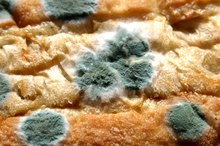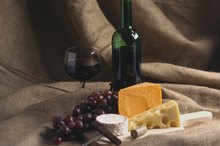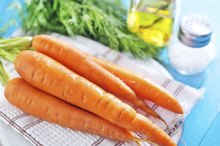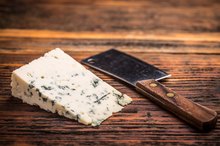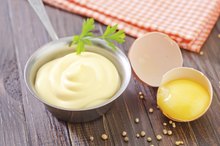Food safety is an increasingly concerning issue, but coffee is an unusual source of food poisoning. While most food professionals are more concerned with meat, dairy, and cooked foods, coffee can become contaminated with ochratoxin and mold. Milk and creamers used to flavor coffee drinks can also transmit food-borne illnesses.
Potential Sources of Food Poisoning
ServSafe states that foods that contain carbohydrates or protein, such as:
- meat
- poultry
- dairy,
- eggs are at risk for causing illnesses
However, it emphasizes that any food can be contaminated and be a carrier for bacteria, viruses, parasites, and fungi that will cause illness. Foods previously not considered sources of food illness include sliced melons, cut tomatoes, sprouts, and untreated flavored oil mixes.
Toxins and Molds
Reasons for Bad Metallic Coffee Breath
Learn More
Some molds produce aflatoxin, which can cause liver disease. According to Food Safety Watch, toxicity of aflatoxin results in necrosis and cirrhosis of the liver 1. Coffee is a potential host for aflatoxin-producing molds because it is grown in tropical climates, where there is higher humidity and more rainfall. Coffee can also be a source of ochratoxin, another toxin produced by fungi, that can cause severe illness or even death. Our Food states that this dangerous toxin cannot be destroyed by cooking, and mortality is high if a person consumes the toxin.
- Some molds produce aflatoxin, which can cause liver disease.
- Coffee can also be a source of ochratoxin, another toxin produced by fungi, that can cause severe illness or even death.
Incidence of Food Poisoning from Aflatoxin and Mold
The incidence of mold developing in food is increased when food is improperly harvested and dried. This is particularly the case with coffee, because the humid climate in which coffee naturally grows can slow adequate drying. In humans, toxicity is rare, but there have been documented cases of populations becoming ill due to consuming contaminated food, according to Food Safety Watch 1. Our Food suggests that low level contamination is fairly common, but the levels found have been below the legal limits.
- The incidence of mold developing in food is increased when food is improperly harvested and dried.
- In humans, toxicity is rare, but there have been documented cases of populations becoming ill due to consuming contaminated food, according to Food Safety Watch 1.
Dairy-related Food Poisoning
What Are the Dangers of Out-of-Date Yogurt?
Learn More
Bacterial contamination is the most typical cause of dairy-related food-borne illnesses. According to ServSafe, bacteria can cause illnesses including gastroenteritis, listeriosis, and salmonellosis. When the bacteria infect the food, they rapidly reproduce when the environmental conditions are ideal. They thrive in room temperature foods and in contaminated, unpasteurized dairy products. They can also be transferred to other foods that would not naturally host the bacteria. If contaminated milk is used to make coffee drinks, you could be at risk of being exposed to these bacteria.
- Bacterial contamination is the most typical cause of dairy-related food-borne illnesses.
- When the bacteria infect the food, they rapidly reproduce when the environmental conditions are ideal.
Safe Handling and Storing
Whether you are a customer or a food service professional, carefully handling coffee and milk products will keep your food safe and prevent food-borne illness. ServSafe, which complies with state regulations, recommends keeping milk cold at 41 degrees or colder. When heating milk and coffee, the beverage should be heated to above 140 degrees. Adhere to the expiration dates, and discard expired milk. The FDA shows that the shelf-life for coffee in unopened containers is up to one year, and once opened can last two to three months at room temperature. If you refrigerate your coffee, you shorten the shelf-life, and it will last only two or three weeks, but frozen coffee can last up to four months.
- Whether you are a customer or a food service professional, carefully handling coffee and milk products will keep your food safe and prevent food-borne illness.
- ServSafe, which complies with state regulations, recommends keeping milk cold at 41 degrees or colder.
Related Articles
References
- Food Safety Watch: Aflatoxin
- ServSafe Coursebook, 2009
- Coffee consumption and health: umbrella review of meta-analyses of multiple health outcomes
- Coffee consumption and health: umbrella review of meta-analyses of multiple health outcomes
- Impact of coffee components on inflammatory markers: A review - ScienceDirect
- Coffee consumption and health: umbrella review of meta-analyses of multiple health outcomes
- Impact of coffee components on inflammatory markers: A review - ScienceDirect
- Coffee consumption and health: umbrella review of meta-analyses of multiple health outcomes
- Consumption of coffee or caffeine and serum concentration of inflammatory markers: A systematic review - PubMed
- Associations of coffee drinking with systemic immune and inflammatory markers
- Effects of coffee consumption on subclinical inflammation and other risk factors for type 2 diabetes: a clinical trial - PubMed
- Consumption of coffee or caffeine and serum concentration of inflammatory markers: A systematic review - PubMed
- Consumption of coffee or caffeine and serum concentration of inflammatory markers: A systematic review - PubMed
- Coffee consumption modulates inflammatory processes in an individual fashion - PubMed
- Chronic Inflammation - StatPearls - NCBI Bookshelf
- Consumption of coffee or caffeine and serum concentration of inflammatory markers: A systematic review - PubMed
- Coffee consumption and health: umbrella review of meta-analyses of multiple health outcomes
Writer Bio
Kimberly Schaub is a nutritionist, writer and cook whose passions have led from serving in the United States Air Force (2005-2006) to R&D for Day by Day Gourmet (2009) and into professional writing for publications since 2006. She has been published in Pepperdine's "Graphic," "That's Natural in Pueblo" and "Pike Place Market News." Schaub earned her Bachelor of Science in nutrition at Pepperdine.

